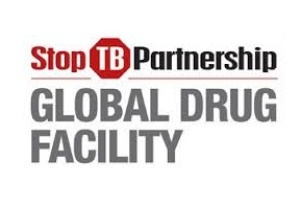Stop TB Partnership Global Drug Facility announces 70 percent price reduction for linezolid
Linezolid is a critical component of regimens used to treat multidrug-resistant tuberculosis (MDR-TB). The GDF-negotiated price reduction is projected to save up to US$ 30 million over the next three years, helping to further improve equitable access to MDR-TB treatment.
28 April 2016 - Geneva, Switzerland - In another landmark achievement, the Global Drug Facility (GDF) of the Stop TB Partnership, has announced that the price of linezolid - a key medicine used to treat multidrug-resistant tuberculosis (MDR-TB) - will be cut by approximately 70% in 2016 compared to the previous year. This significant price reduction is projected to save up to US$ 30 million over the next 3 years, bringing us one step closer to making crucial MDR-TB medicines accessible to people that need them the most.
Linezolid is a key companion drug that is often used alongside of two new life-saving medicines, bedaquiline and delamanid; but until now the high price of linezolid made it difficult to access for many TB programs.
Dr Brenda Waning, Chief of the Global Drug Facility, said: "The linezolid announcement follows GDF’s recent statements on bedaquiline and delamanid and is part of a broader GDF Strategy that aims to expedite the rate and increase the extent to which new MDR-TB medicines are introduced in resource-limited settings."
In March 2015, the Unites States Agency for International Development (USAID) & Johnson & Johnson, signed an agreement to provide 30,000 bedaquiline treatments free-of-charge to more than 100 eligible countries over a four-year period. Under a USAID agreement, the GDF administers the bedaquiline donation, utilizing tools to ensure medicines get to people who need them as quickly as possible.In February 2016, the Stop TB Partnership’s GDF announced a public-private partnership with Otsuka Pharmaceuticals to supply delamanid via the GDF procurement mechanism to more than 100 eligible countries.
MDR-TB is a serious global health threat. Among the 480,000 people who develop MDR-TB each year, 210,000 will die from the disease. Unfortunately, only 20% of those with MDR-TB actually get treated and cure rates globally are below 50%. Low cure rates for MDR-TB are often attributed to treatment regimens that are costly, long, complex, and difficult to tolerate. People are treated for up to two years with regimens made up of hundreds of pills and daily injections that bring severe side effects, including kidney damage and hearing loss.
But, after a 40-year dearth in new drug development for MDR-TB treatment, hope is on the horizon for the TB community. Research is ongoing to develop shorter, safer, more effective regimens. The Stop TB Partnership Secretariat, and especially the GDF team, stands ready with its public and private partners to ensure these medical breakthroughs get to those in need as quickly as possible and at the lowest, sustainable prices.
Dr Lucica Ditiu, Executive Director of the Stop TB Partnership, said: "Our aim is to ensure that everyone that needs access to diagnosis, treatment and care should have it irrespective of where they are born, where they live, gender, age and any socio-economic factors. Our aim is to have a drug regimen treatment that is less than eight months, with no side effects and is affordable for everyone. We are on the right track to achieve this."
Ms. Cheri Vincent, Division Chief for USAID’s Infectious Diseases Division said, "The availability of quality-assured, affordable TB drugs is a key element of USAID’s TB program. This accomplishment is an excellent example of how coordinated action by the TB community, led by GDF, can provide more options for those suffering from MDR-TB. The increased availability of drug options at affordable prices complements our work to scale up shorter, better-tolerated and more effective regimens for the treatment of MDR-TB, and supports USAID’s efforts to ensure a strong response to the White House National Action Plan for Combating MDR-TB. USAID has been instrumental in the development of GDF and continues to support its strategic direction to meet the needs of TB patients worldwide."
The Global Drug Facility of the Stop TB Partnership’s mission is to provide quality-assured, anti-TB drugs at an affordable price globally. Currently, there are over 130 countries benefitting from GDF’s competitive pooled procurement mechanism. GDF provided over $1.4 billion worth of TB commodities since its inception in 2001, mainly to low-income countries. There has been a three-fold increase in number of products and suppliers of second-line drugs to treat MDR-TB since 2011, resulting in almost 50% price reduction for MDR-TB treatment.
This week, private sector representatives from more than 20 companies -- including 17 pharmaceutical manufacturers, freight forwarders, and logistics companies -- as well as representatives from USAID, WHO, the International Dispensary Association, the USAID/Promoting Quality of Medicines Project, and the National TB Program of Viet Nam have gathered in Da Nang, Viet Nam for the 2016 GDF Suppliers Meeting. The annual GDF Suppliers Meeting is a forum to share results of the recently concluded TB medicines tender, discuss key TB medicines issues, and make concrete plans for how GDF will engage with the private sector in its efforts to maximize access to TB medicines.
Source: Stop TB Partnership


